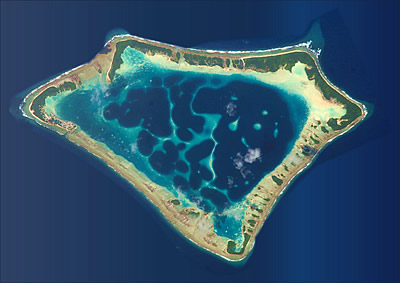The constantly changing configuration of the oceans and the continents has played an important role in the geological history of the Earth.
The oceans were the starting point for most of the sedimentary rock we find on the continents today. The ocean's sediments - the loose material that eventually becomes sedimentary rock - come from a variety of places.
Rivers wash debris, such as sand and silt, from the continents into the oceans.
Every day, rivers wash billions of tons of salt into the oceans
The ocean is constantly pounding away at the continents and eroding the coasts.
Beneath the ocean, volcanoes are erupting.

Many creatures in the ocean have calcareous or silica shells and skeletons. When they die, their remains sink and accumulate on the ocean bottom. Some organisms, such as radiolarians, diatoms and coccoliths, accumulate to form oozes that cover more than half the ocean floor.
Limestone and chalk rocks are collections of millions of skeletons - a piece of chalk for writing on a blackboard probably contains a quarter of a million shells.
Larger creatures, such as algae, mollusks, sea urchins and corals, also form limestone.
In the future, the modern coral islands in the Pacific and Indian Oceans will themselves eventually form a type of limestone.
Although the carpet of sediment on the ocean floor is sometimes 750 -1,000 meters thick, the rate of accumulation is very slow.
In the Pacific and Indian Oceans, the rate is between a millimeter and a centimeter per 1,000 years. In the Atlantic, it is one to ten centimeters every 1,000 years.